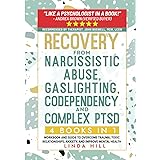The global conversation around digital entertainment has never been more vibrant, particularly concerning the meteoric rise of video games. With titles like Fortnite boasting over 125 million players and generating upwards of $300 million monthly, the sheer scale of engagement is undeniable. However, this phenomenon has also ignited a fervent debate: is it possible to develop a genuine video game addiction? As the accompanying video succinctly explores, while the World Health Organization (WHO) has officially recognized ‘gaming disorder’ as a mental health condition, other authoritative bodies, such as the American Psychiatric Association (APA), remain cautious, citing a need for more conclusive research.
This division among experts highlights the complexity of what constitutes problematic engagement versus a clinically diagnosable addiction. Understanding the nuanced perspectives, the psychological underpinnings, and the neurobiological correlates is crucial for anyone navigating the digital landscape, whether they are a gamer, a parent, or a mental health professional.
Understanding Gaming Disorder: The Clinical Debate
The classification of gaming disorder as a mental health condition by the World Health Organization in its International Classification of Diseases (ICD-11) marked a significant moment. This decision identifies a pattern of gaming behavior characterized by impaired control over gaming, increasing priority given to gaming over other life interests and daily activities, and continuation or escalation of gaming despite negative consequences. For a diagnosis, this pattern must be sufficiently severe to result in significant impairment in personal, family, social, educational, occupational, or other important areas of functioning, and would normally have been evident for at least 12 months.
Conversely, the American Psychiatric Association (APA) has listed “Internet Gaming Disorder” (IGD) in Section 3 of its Diagnostic and Statistical Manual of Mental Disorders (DSM-5), designating it as a “condition for further study.” This stance reflects a cautious approach, acknowledging that while some individuals experience significant problems related to gaming, more research is needed to establish clear diagnostic criteria, prevalence rates, and effective treatment approaches before formal inclusion as a standalone disorder. The APA’s hesitation underscores concerns about pathologizing enthusiastic engagement and the potential for misdiagnosis, preferring to ensure robust empirical evidence supports any new diagnostic category.
The core of this disagreement lies in the definition of addiction itself. Historically, addiction was primarily associated with substance use, where chemical alterations in brain chemistry played a definitive role. However, the reclassification of gambling disorder from an impulse control problem to a behavioral addiction in 2013 opened the door for other non-substance behaviors to be considered addictive. This precedent laid the groundwork for the current discussion around gaming, compelling researchers to investigate whether the neurological and behavioral patterns observed in severe gaming mirror those found in established addictions.
The Neurobiology of Problematic Gaming
When individuals engage in highly rewarding activities, whether it’s consuming a favorite food, using a substance, or playing an engaging video game, specific neural pathways in the brain are activated. Central to this process is the dopamine reward system, a network of brain structures that release dopamine in response to pleasurable stimuli. This neurotransmitter plays a key role in motivation, reward, and reinforcement learning, driving us to repeat behaviors that lead to positive outcomes.
Research using functional MRI (fMRI) has shown that in some individuals struggling with compulsive gaming, these reward pathways activate in ways strikingly similar to those observed in substance use disorders. This suggests that the intense gratification derived from gaming can, for a susceptible subset of the population, hijack the brain’s reward circuitry. The anticipation of rewards—be it a new weapon, a character skin, or a level-up notification—triggers dopamine release, creating a powerful feedback loop that can make it exceedingly difficult to disengage.
Over time, sustained activation and overstimulation of these reward pathways can lead to neuroplastic changes. This might manifest as a desensitization to dopamine, requiring more intense or prolonged gaming sessions to achieve the same level of satisfaction, a phenomenon known as tolerance. Concurrently, individuals may experience heightened sensitivity to gaming cues and intense cravings when not playing, forming the behavioral hallmarks of a potential addiction. Understanding these neurobiological underpinnings is vital for developing targeted interventions and support systems for those who find their gaming behaviors spiraling out of control.
Game Design and the Psychology of Engagement
Video games are not accidentally captivating; they are meticulously engineered by experts in psychology and design to be inherently engaging. Developers leverage sophisticated psychological principles to create immersive experiences that motivate sustained play. One of the most prominent frameworks explaining this motivation is Self-Determination Theory (SDT), which posits three universal psychological needs essential for human flourishing and intrinsic motivation: autonomy, mastery, and purpose (or relatedness).
-
Autonomy: This is the desire to be self-directed and have a sense of choice and control over one’s actions. In games like Fortnite, players have immense autonomy—they choose their landing spots, their strategies (e.g., aggressive rushes versus “camping”), their teammates, and how they utilize their in-game resources. This freedom provides a powerful sense of agency that is often less available in real-world obligations.
-
Mastery: Humans inherently seek competence and personal growth. Games provide continuous opportunities for skill development and improvement. Whether it’s perfecting aim, learning complex build mechanics, or strategizing effectively against 99 other players, the clear progression systems and immediate feedback loops in games offer a constant pathway to feeling more capable. The thrill of overcoming a challenge and seeing tangible improvement is a potent motivator.
-
Purpose/Relatedness: This refers to the desire to feel connected to others, to be part of something larger than oneself, or to contribute meaningfully. Modern multiplayer games excel here. Seventy percent of gamers play with other people, fostering cooperative play, competitive rivalries, and strong online communities. Platforms like Twitch and Reddit further amplify this sense of belonging, allowing players to share experiences, strategies, and even develop deep friendships, creating a compelling social ecosystem that transcends the game itself.
Beyond these core needs, game designers employ other powerful psychological tools, such as variable reward schedules, where rewards are delivered unpredictably. This mirrors slot machines, making players feel “just one more game” will yield a desirable outcome. Social validation, through leaderboards, in-game achievements, or peer recognition, also plays a significant role in keeping players engaged. The cumulative effect of these design choices creates an incredibly compelling environment that can be difficult to step away from, blurring the lines between passionate engagement and compulsive behavior.
The Double-Edged Sword: Benefits and Risks of Extensive Gaming
While the debate around problematic gaming rages, it is crucial to acknowledge that gaming is not monolithically detrimental. Research increasingly highlights numerous cognitive and even social benefits, particularly from certain genres like fast-paced action games. These benefits often extend beyond the game environment into real-world tasks.
Cognitive Enhancements Through Gaming
Studies have demonstrated that engaging with action-packed video games can significantly enhance various cognitive functions. Players of first-person shooters, for example, have shown marked improvements in:
-
Attention and Focus: Gamers often exhibit faster and more accurate attention, becoming adept at filtering out distractions and focusing on relevant stimuli in complex visual environments.
-
Visual Processing: Improved spatial resolution, quicker processing of 3D objects, and enhanced visual tracking abilities are common. This can translate to better real-world skills requiring rapid visual assessment.
-
Problem-Solving and Decision-Making: Games often present players with dynamic, rapidly evolving scenarios requiring quick strategic thinking and adaptive problem-solving under pressure.
-
Creativity: Certain games, particularly those with sandbox elements or complex strategies, can foster creative thinking and innovative problem-solving approaches.
The practical implications are profound. Research has indicated that pilots and surgeons, after engaging in action games, were able to outperform their peers in tasks requiring high levels of precision, focus, and rapid decision-making. These findings suggest that gaming can act as a form of cognitive training, sharpening skills that are highly valued in critical real-world professions.
Social Dimensions of Digital Play
Beyond individual cognitive benefits, the social aspect of gaming is often underestimated or misunderstood. With 70% of gamers playing with others, modern gaming is a deeply social activity. Multiplayer games foster:
-
Teamwork and Cooperation: Many games require players to collaborate, communicate, and coordinate strategies to achieve common goals, fostering essential teamwork skills.
-
Community Building: Online guilds, clans, and social platforms dedicated to games create vibrant communities where players connect, share knowledge, and build relationships, sometimes leading to strong friendships both online and offline.
-
Mentorship and Learning: Experienced players often teach newcomers strategies, mechanics, and game etiquette, creating a dynamic learning environment.
These social interactions can be particularly beneficial for individuals who might struggle with traditional social settings, offering a safe and engaging space for connection and identity formation. The cultural phenomenon surrounding games like Fortnite, with its emotes, memes, and widespread discussions, illustrates how gaming can transcend mere entertainment to become a significant cultural touchstone and a powerful avenue for social engagement.
Beyond the Screen: Addressing Underlying Issues
A critical perspective in the video game addiction research debate emphasizes that excessive gaming might often be a symptom rather than the primary cause of distress. Researchers who express skepticism about a standalone gaming disorder often argue that individuals who struggle to regulate their gameplay might be using gaming as an escape mechanism to cope with pre-existing or co-occurring mental health challenges. Conditions such as anxiety, depression, social anxiety, ADHD, or even difficult life circumstances (e.g., bullying, academic pressure, family issues) can drive individuals to seek refuge and gratification in the virtual world.
In this view, the immersive and rewarding nature of games offers a temporary reprieve from real-world problems. The sense of accomplishment, social connection, and control experienced in games can be a powerful antidote to feelings of inadequacy, isolation, or helplessness. Therefore, simply curtailing gaming without addressing the underlying emotional and psychological issues may not resolve the core problem and could even lead to a search for other maladaptive coping mechanisms.
For example, if a teenager struggling with social anxiety finds solace and friendship in an online gaming community, removing access to gaming without providing alternative social outlets or therapeutic support could exacerbate their anxiety and isolation. This perspective advocates for a holistic approach, where problematic gaming is assessed within the broader context of an individual’s mental health and life circumstances, ensuring that underlying issues receive appropriate attention and treatment.
Navigating the complex landscape of digital well-being requires a balanced perspective. It involves recognizing the potential for both significant engagement and genuine harm, acknowledging the benefits alongside the risks, and tailoring interventions to individual needs and contexts. The ongoing debate surrounding video game addiction underscores the dynamic interplay between technology, psychology, and society, urging continued research and thoughtful dialogue.











